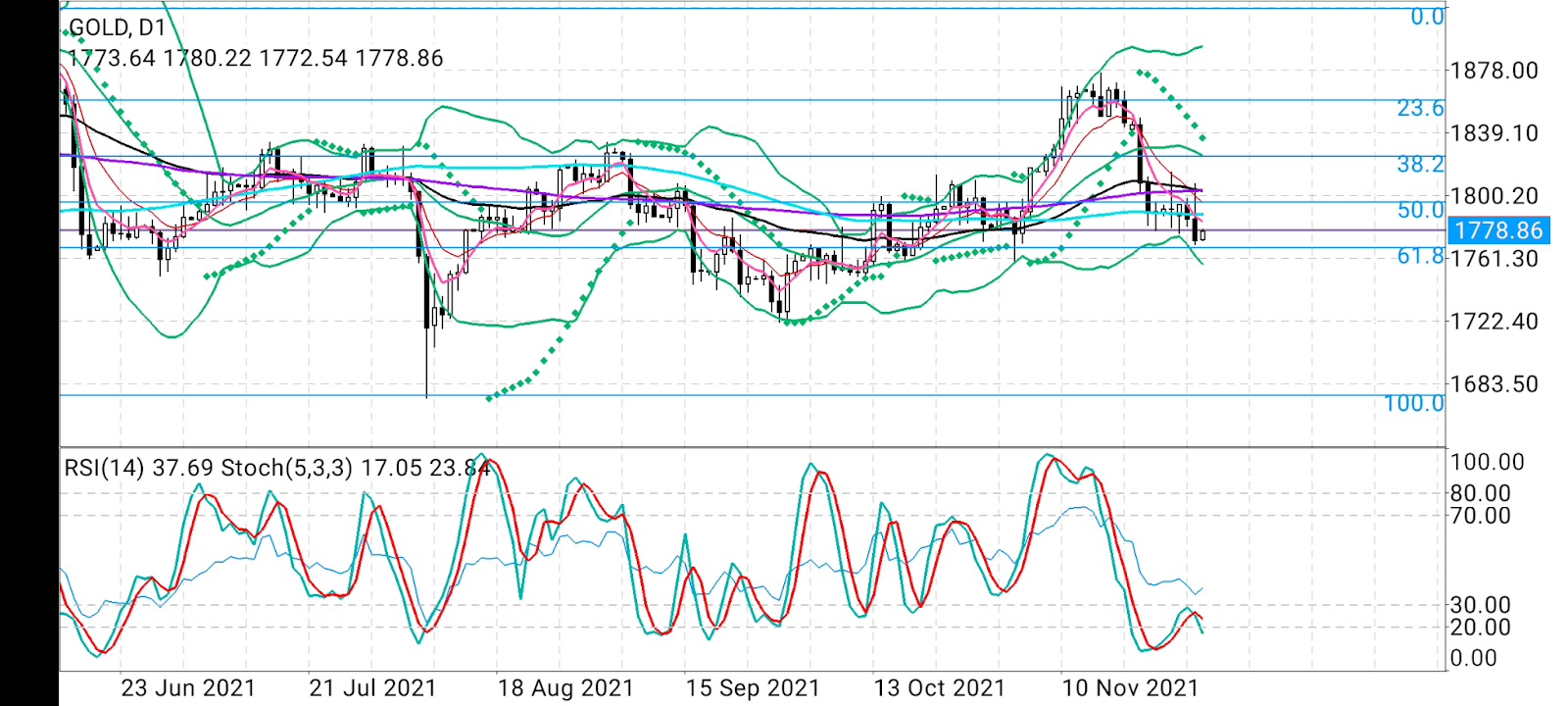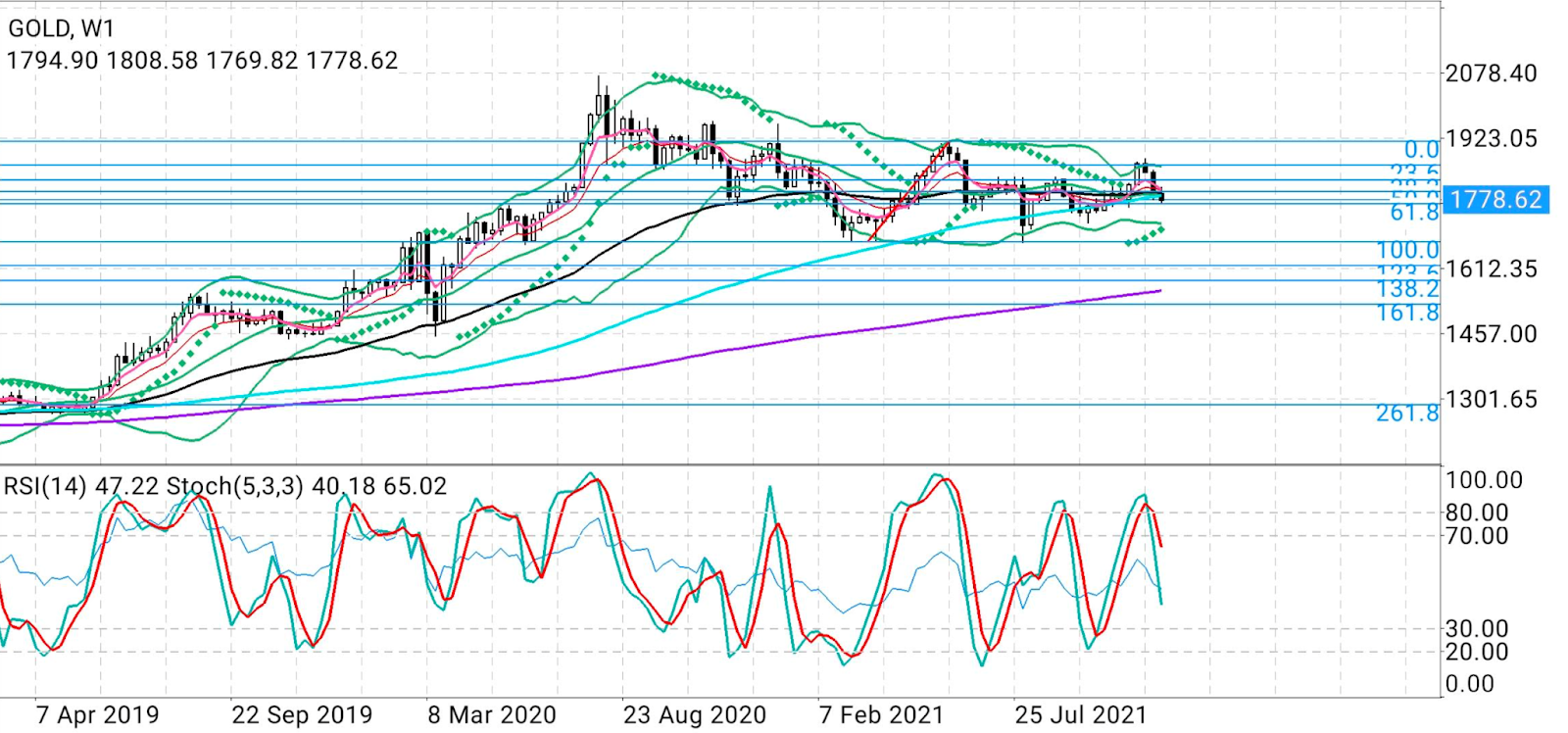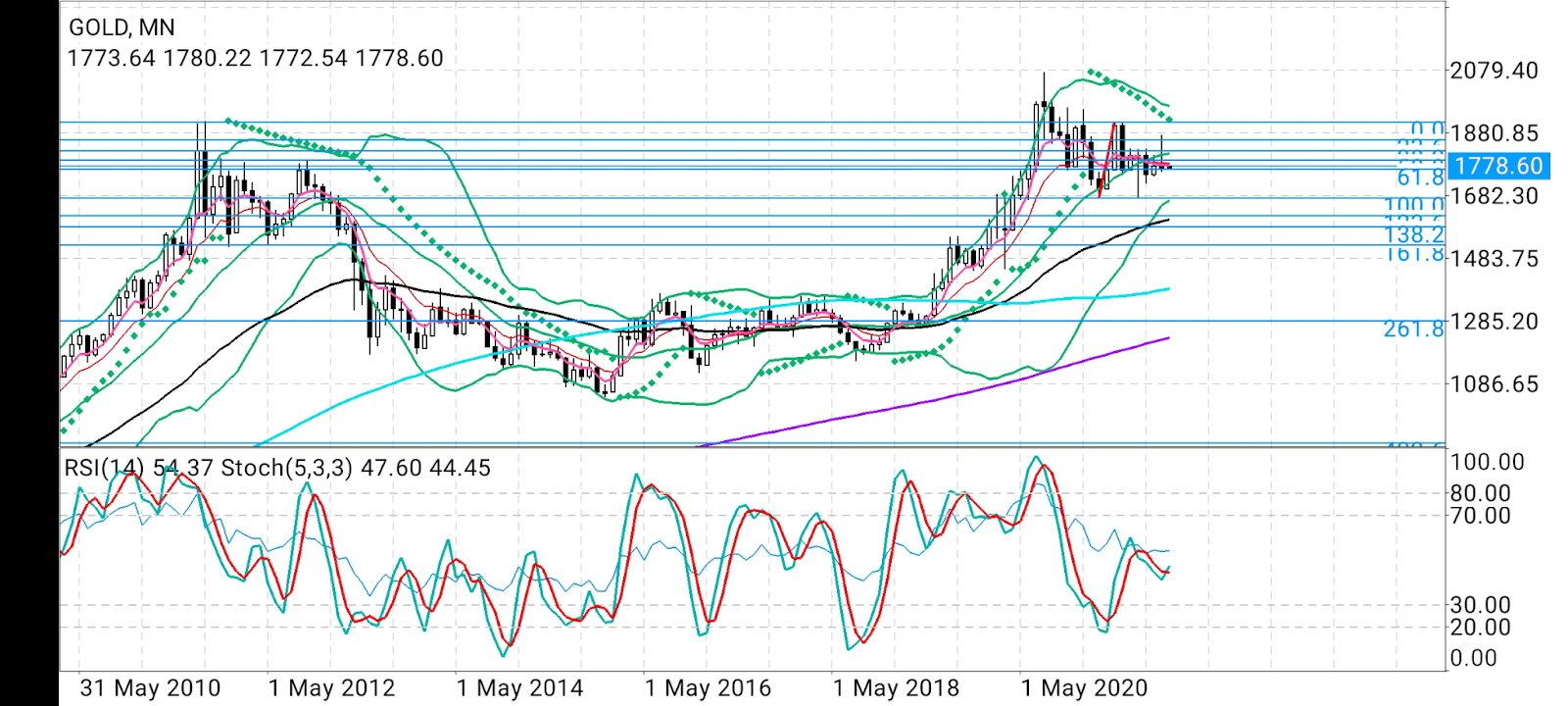To most gold bulls, what Jerome Powell suggested would be the last thing they’d have expected from the Fed chair: A faster taper of the pandemic-era stimulus that the central bank has undoubtedly held on to longer than many expected.
Along with his intimation that the bond-buying rollback, which began just this month, be hastened, Powell also proposed retiring the terms “transient” and “transitory” from the Fed’s vocabulary on inflation.
It was Powell himself who birthed those phrases when defending the central bank’s decision not to expedite the stimulus taper or raise rates months ago to curb runaway US inflation.
Now, with his twin proposals, he has acknowledged that inflation is red-hot, growing at the fastest pace in more than 30 years, and that he will likely do the appropriate thing to quell that: raise rates before the third or fourth quarter of 2022.
The market's verdict: In one fell swoop, Powell has turned from a fiscal dove to a hawk.
That the shift came a week after President Joseph Biden renominated him for a second four-year term as chair wasn’t missed by many. “Abrupt,” but “conveniently-timed,” Ed Moya of online trading platform OANDA said, describing Powell’s transformation.
Based solely on Powell’s stance, the outlook for gold would be bearish, with technicals suggesting a revisit to $1,600 territory especially if the “twin evils” of the dollar and US Treasury yields take off again.
But What About Gold’s Fundamental Backdrop And Its Resilience So Far?
Gold actually recaptured the bullish $1,800 perch on Monday, to the surprise of many.
But its stay there was brief and came after Moderna (NASDAQ:MRNA) CEO, Stéphane Bancel said existing vaccines in the market will likely be inadequate to fight the Omicron variant of COVID-19, and it might take months to develop specific doses at scale. Bancel’s remarks unleashed a risk-off bias that allowed gold and other safe-havens to rally.
But Powell soon threw cold water on the gold rally as the dollar spiked on his remarks that there might be a faster stimulus taper and rate hike.
Yet, gold didn’t collapse altogether, holding at just above $1,775.
And there’s a reason for that, as noted by precious metals strategist Warren Venketas in a blog that appeared on dailyfx.com. He wrote:
“Once markets digest the testimony, the issue of slowing economic growth and persistent inflationary pressure could see the ‘stagflation’ debate regain traction. Gold prices could benefit from this type of economic backdrop but remains tied to additional Omicron data.”
Surging European inflation “adds to the ‘sticky’ interpretation of inflation and should favor gold’s upside,” Venketas said.
“Gold volatility is also on the rise—commensurate with price action, and now testing June highs,” he added.
“Gold volatility can be a blessing or a curse for spot gold prices (with correlations varying over time) but with the dollar looking bearish under current circumstances, an uptick … could lead to a stronger gold price.”
So What’s The Technical Outlook Then?

All charts courtesy of skcharting.com
A breach below $1,759 could open the door for a move back towards the October low around $1,721, gold strategist James Stanley said in another blog that ran on dailyfx.com.
“The big price level on gold is $1,680—that’s the 2021 low and it’s already been tested three different times,” Stanley added.
“If the bear flag resolves, that’s the price worthy of focus.”

Nick Cawley, another gold blogger, however, argues that gold could attempt to hold at current levels and try moving up.
“With gold’s risk-off status under question, at least in the short-term, the price of the precious metal may struggle to move higher, despite looking oversold,” Cawley said.
“A cluster of prior lows just above $1,778 should act as initial support before the 50% Fibonacci retracement level at $1,763.5/oz. comes back into play again.”

Sunil Kumar Dixit of skcharting.com concurred with that view, but maintained that gold’s immediate bias appeared to the downside.
“The November month candle has closed with a long bearish pin bar,” said Dixit.
“The break below the low of $1,758 should be the beginning of further downside to $1,717 and beyond, where the major support of $1,680-$1,670 area will be available.”
But all wasn’t lost on gold’s upside, Dixit conceded, adding:
“A sustainable closing above the $1,815-$1,835 zone can reestablish the upside momentum.”
Disclaimer: Barani Krishnan uses a range of views outside his own to bring diversity to his analysis of any market. For neutrality, he sometimes presents contrarian views and market variables. He does not hold a position in the commodities and securities he writes about.
